
In every ecosystem, there are different roles in the circle of life. At the bottom are the basic plants, above those are the herbivores that consume them, and topping these are the carnivores that prey upon the herbivores. After the carnivores (as well as herbivores who haven't been eaten) die and fade to dust, the plants harvest nutrients from the remains to perpetuate the cycle anew.
RELATED: Subnautica: Below Zero - How to Get to the Fabricator Caverns Entrance
This is true for almost every ecosystem on Earth, albeit oversimplified; though it is also true for Planet 4546B in Subnautica: Below Zero. The human player takes the role of a relatively small omnivore in this alien world and knowing about some of the most common aquatic fauna can be a great boon in surviving the harsh conditions. Taking stock of all the potential prey species is a great place to start, so keep an eye out for the herbivores and give them a scan to become a bit wiser.
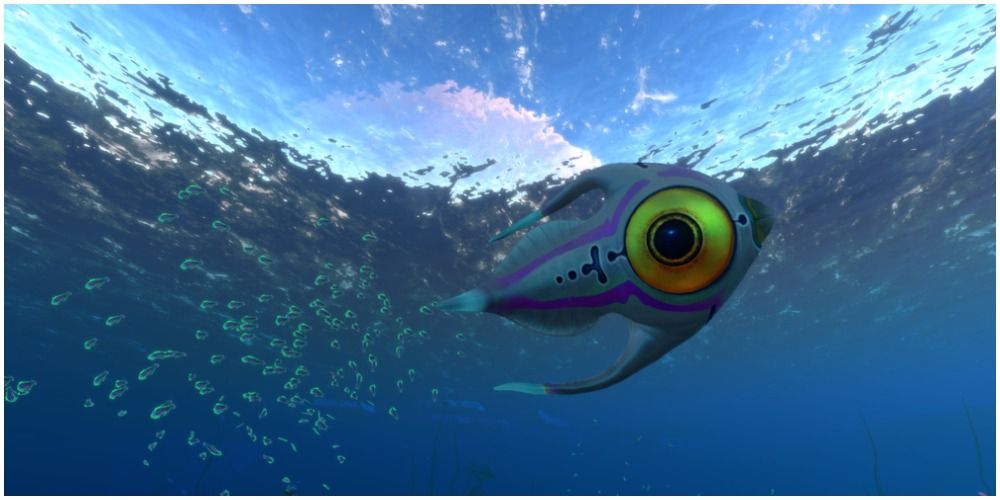
These big-eyed fish are fast and sometimes like to travel in groups. They can be easily spotted from their huge yellow and black eyes. Their bodies are peanut-shaped and possess upper and lower tendril-like fins which aid the Arctic Peepers in swimming. This species is edible and relatively easy to catch, therefore hungry players should keep an eye out for them.
- Arctic Spires
- East Arctic
- Glacial Basin
- Underwater Caves
- Glacial Bay
- Glacial Connection
- Shallow Twisty Bridges
- Sparse Arctic
- Thermal Spires
- Twisty Bridges
- West Arctic
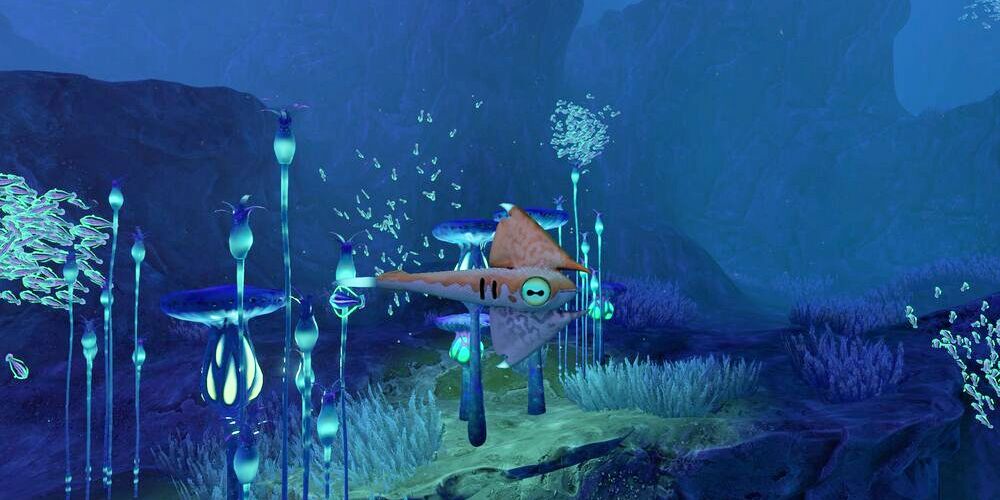
Another vertically-oriented fish, the Arrow Ray has a teardrop-shaped body with proportionately huge fins on the top and bottom of their heads. Their large green eyes help them scan the waters for predators and the small white spikes on their tails and fins help them defend themselves.
- Lilypad Islands
- Tree Spires
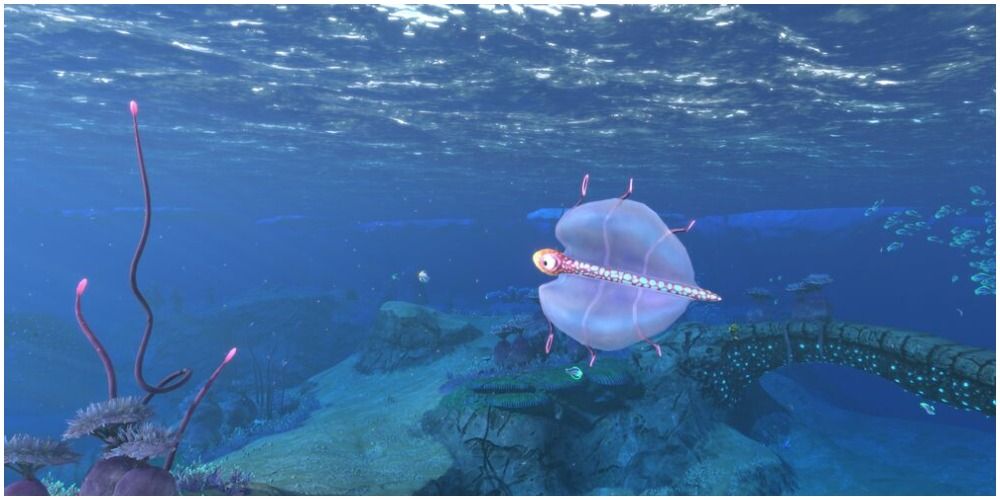
Benign and mostly oblivious to their surroundings, Bladderfish don't seem to have any defense mechanisms besides being plentiful in many environments as well as being mostly composed of air, water, and a thin skeleton. This is convenient for the player, as they are extremely useful for survival in that they can be used to restore the hunger, thirst, and oxygen bars.
- Arctic Spires
- Crystal Caves
- Deep Purple Vents
- East Arctic
- Glacial Basin
- Glacial Bay
- Glacial Connection
- Lilypad Islands
- Purple Vents
- Shallow Twisty Bridges
- Thermal Spires
- Twisty Bridges
- West Arctic
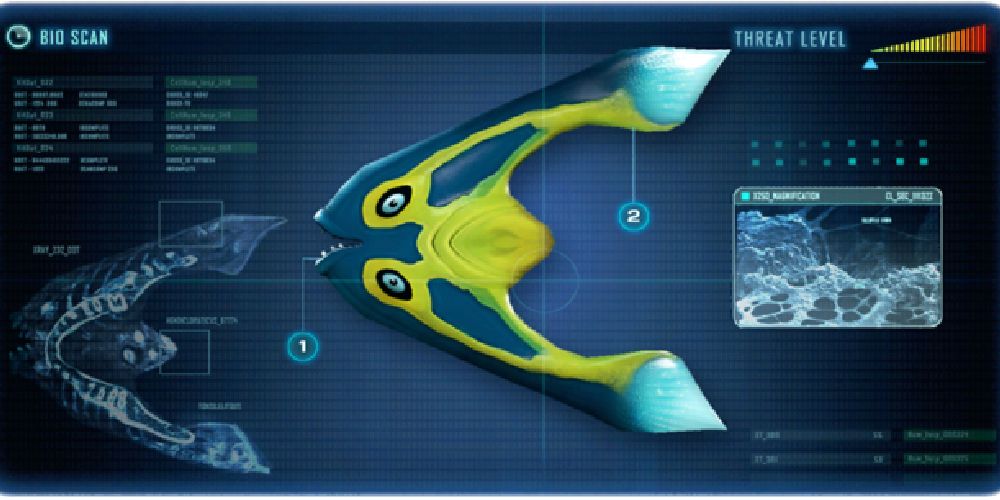
Very unique, even among the other alien fauna of Planet 4546B, Boomerang have a strangely curved skeleton that extends into each of their fins. This makes them more resilient to damage while also providing better movement through the water. The glow at the end of their fins is a result of their diet composed of bioluminescent coral. These edible fish can be found in large schools in quite a few different biomes.
RELATED: Subnautica: Below Zero - How to Get Root Pustules
- Arctic Kelp Forest
- East Arctic
- Shallow Twisty Bridges
- Thermal Spires
- West Arctic
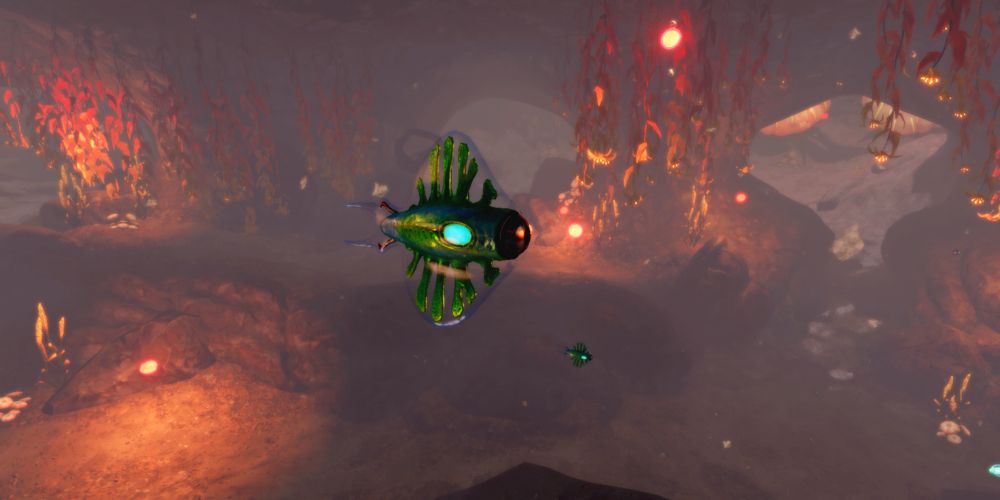
This bizarre dweller of the deep looks more like a toy submarine than a living organism, though it is undeniably a fish. Their laterally compressed bodies may be vibrant and attract predators, however, their slim build allows Discus Fish to escape into cracks and crevices.
- Deep Lilypads Cave
- Tree Spires
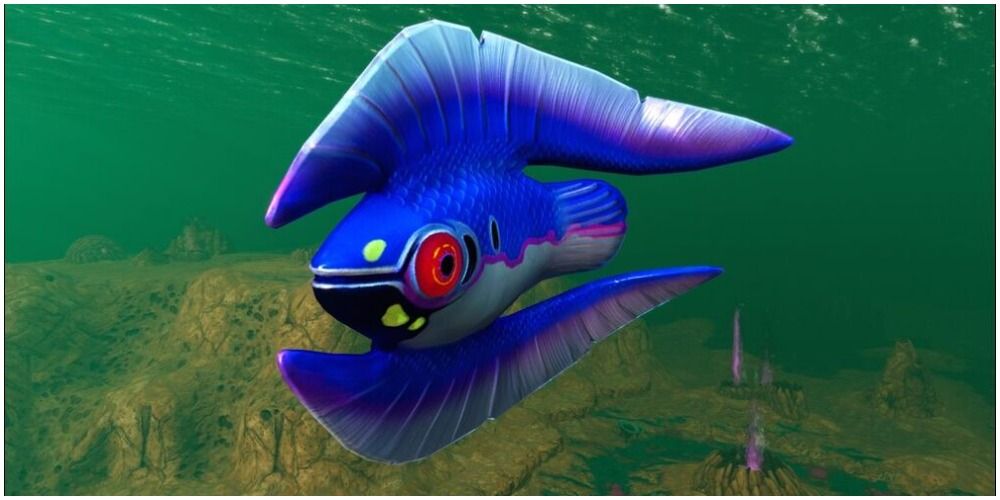
Being brightly colored to the human eye makes one think that Feather Fish are easy marks for predators, however, they are speedy enough to avoid most hunters. Their white underbellies also help them avoid detection from predators lurking below as the pale coloration helps them blend in with the sunlit water around them.
- Deep Purple Vents
- Lilypad Islands
- Purple Vents
- Thermal Spires
- Koppa Mining Site
- Crystal Caves
- Deep Purple Vents
- Fabricator Caverns
- Mercury II
- Tree Spires
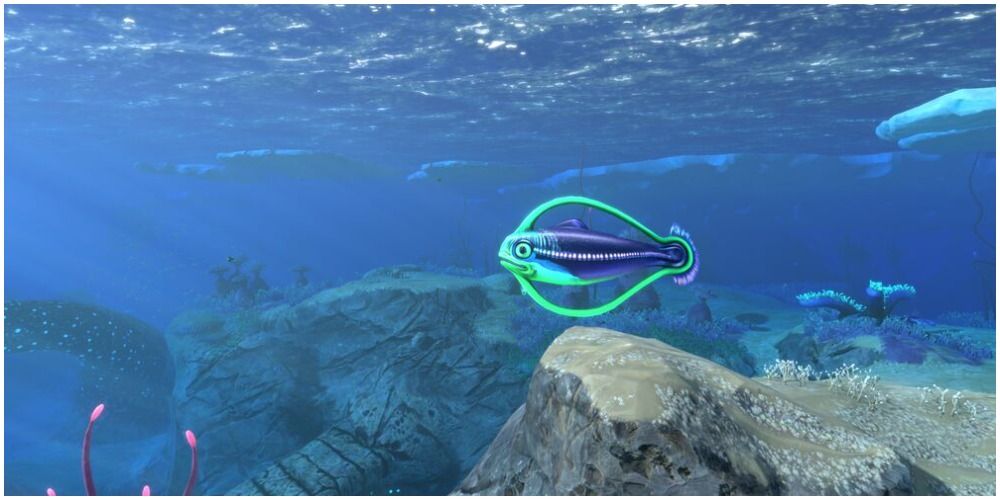
Related to Bladderfish, Hoopfish are another interesting aquatic organism in regards to their body plan. Instead of swimming by traditional means, their green hoop-like antennae that encircle their body instead alters the water around the Hoopfish to create small vacuums that allow it to sail through the waves. They also show signs of intelligence, such as investigating coral and socializing with others of their species.
- Arctic Kelp Caves
- Crystal Caves
- East Arctic
- Shallow Twisty Bridges
- Tree Spires
- Twisty Bridges
- West Arctic
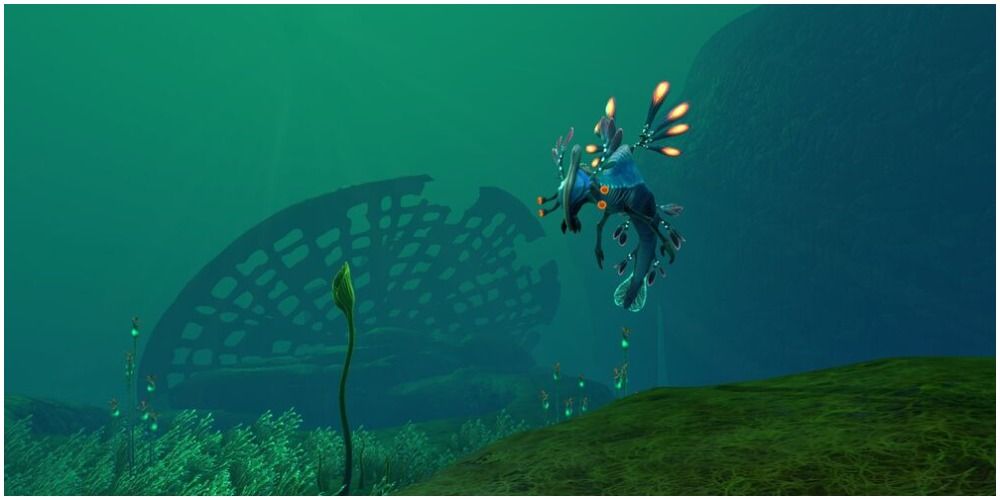
Slow-moving with brightly glowing appendages, the Lily Paddler is an easygoing grazer that forages food from the seafloor with its long, thin arms. While harmless and non-hostile, if the player gets too close, the medium-sized herbivore will telepathically stun them, which will result in temporary immobility.
RELATED: Subnautica: Below Zero - How to Get Young Cotton Anemone
- Deep Lilypads Cave
- Lilypads Crevice
- Lilypad Islands
- Tree Spires
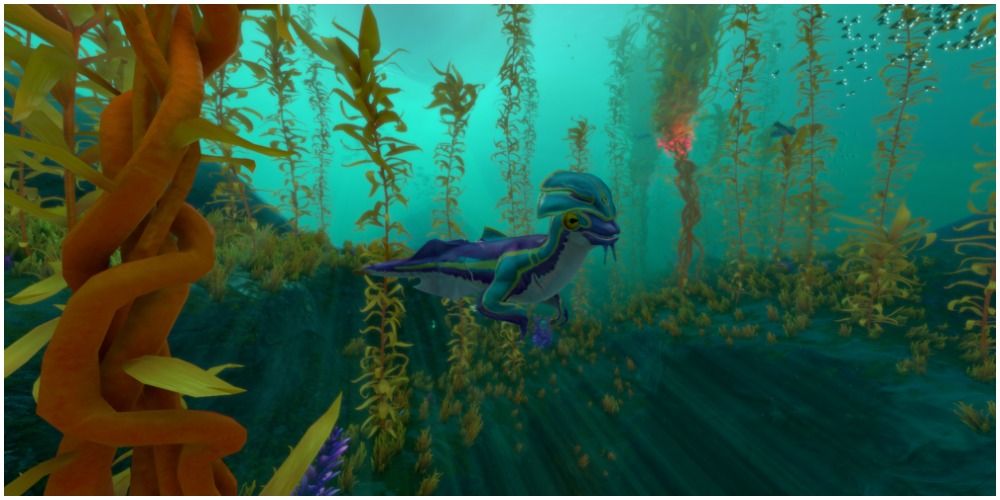
While harmless, be wary of these seal-like fish, for they can use their simple arms, each tipped with two fingers, to steal one's tools. They show a high degree of intelligence and interest in their surroundings, though this fearless adventuring can lead them to annoying humans enough to elicit sometimes violent responses.
- Arctic Kelp Caves
- Arctic Kelp Forest
- Lilypad Islands
- Lilypads Crevice
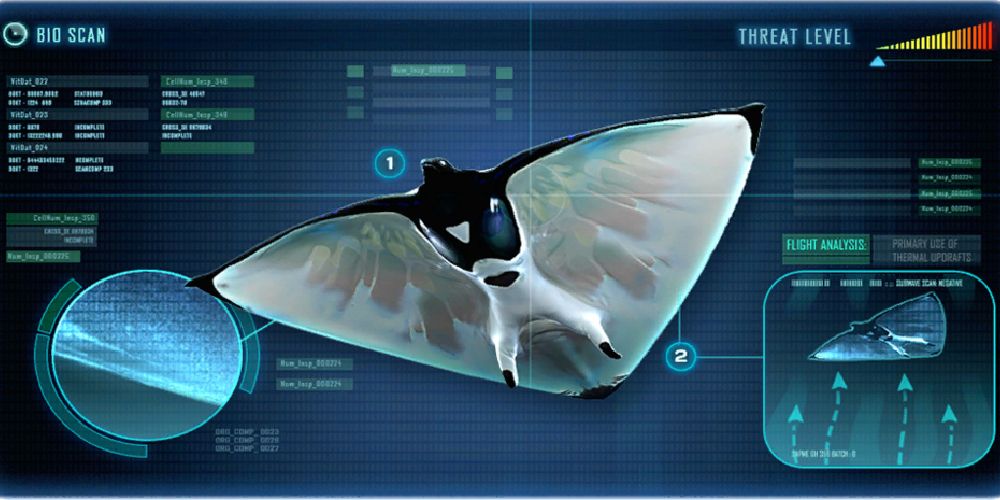
Rare for Planet 4546B, this organism is one that possesses flight and can soar around with its massive wingspan. Sky Rays subsist on a diet of mostly seeds, therefore they mostly keep to the land. Spotting one from the surface of the sea is usually a good indication that there is an island nearby.
- Delta Island
- Glacial Basin
- Glacial Bay
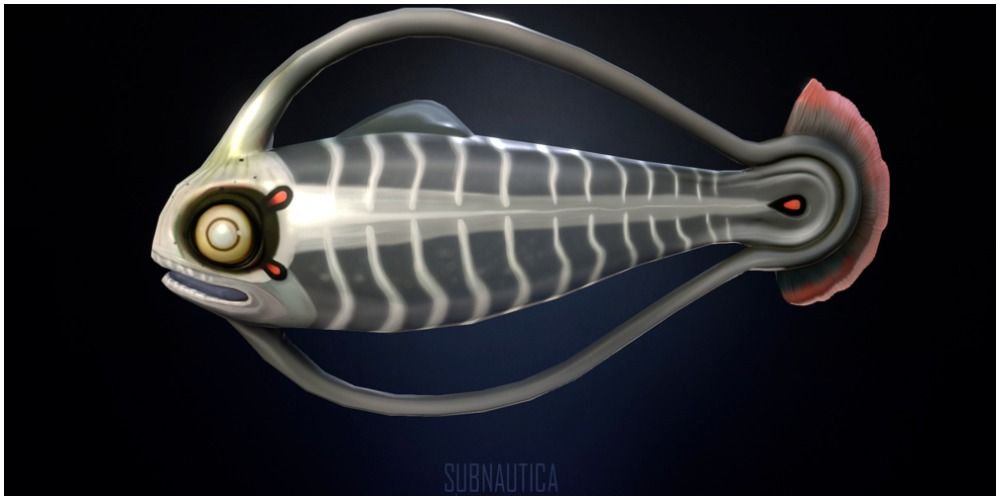
The spooky skeletal pattern on a Spinefish may lead one to believe they are simply dead Hoopfish, but that's what they want predators to think. They are very much edible for humans, however, they contain very low amounts of nutrients and are not worth going out of the way to catch.
- Crystal Caves
- Deep Lilypads Cave
- Deep Twisty Bridges
- Fabricator Caverns
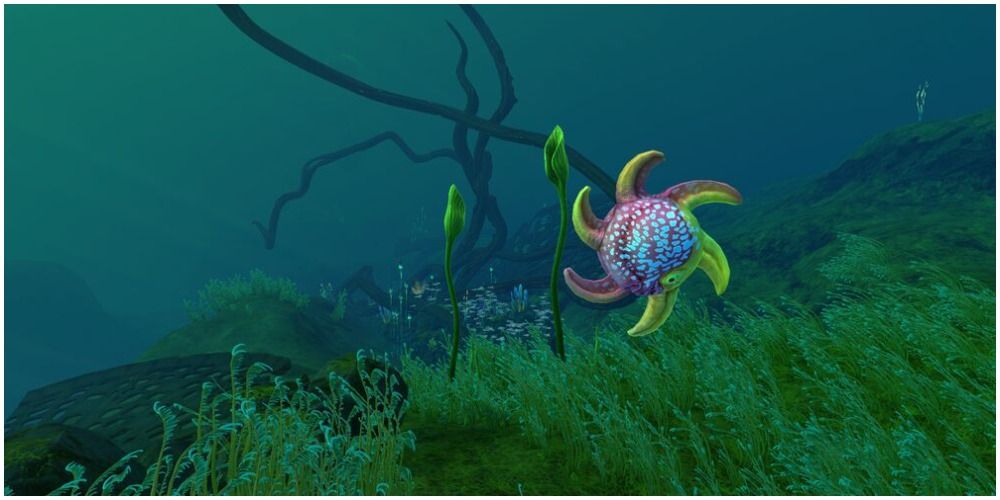
Amusing to watch whenever nearby, Spinner Fish have one of the strangest methods of locomotion that can be observed on Planet 4546B. Essentially, they use their six limbs to cartwheel through the water like some sort of excessively determined starfish. This creature is edible, but good luck catching one, as their odd locomotion can result in surprisingly fast movements.
RELATED: 8 Mistakes Everyone Makes While Playing Subnautica: Below Zero
- Arctic Kelp Caves
- Deep Lilypads Cave
- Lilypad Islands
- Lilypads Crevice
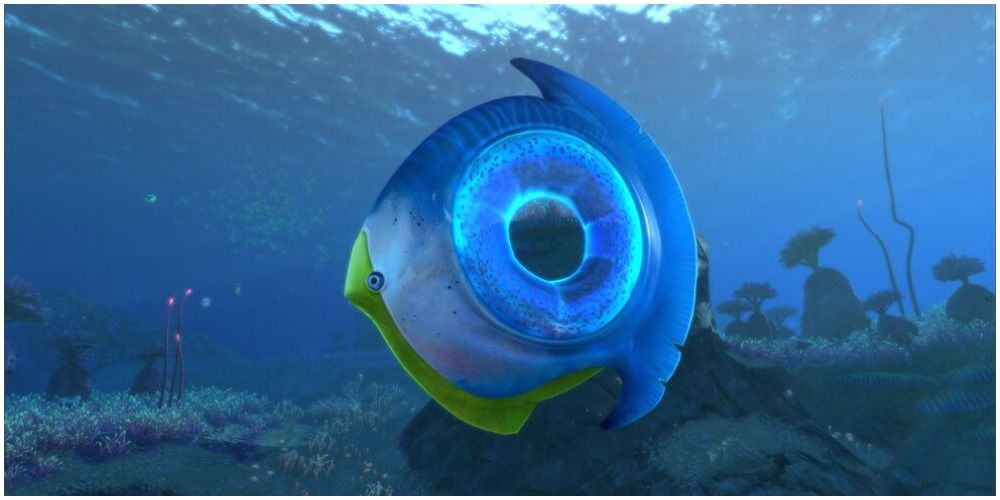
These gentle grazers are beneficial to be around, even if they are not edible, and their large ring-like bodies often have a large air bubble that the player can use to replenish some of their oxygen every once in a while. They are usually accompanied by aggressive fish that use the Titan Holefish's large body as a home, so be wary when around them.
- East Arctic
- Sparse Arctic
- West Arctic

